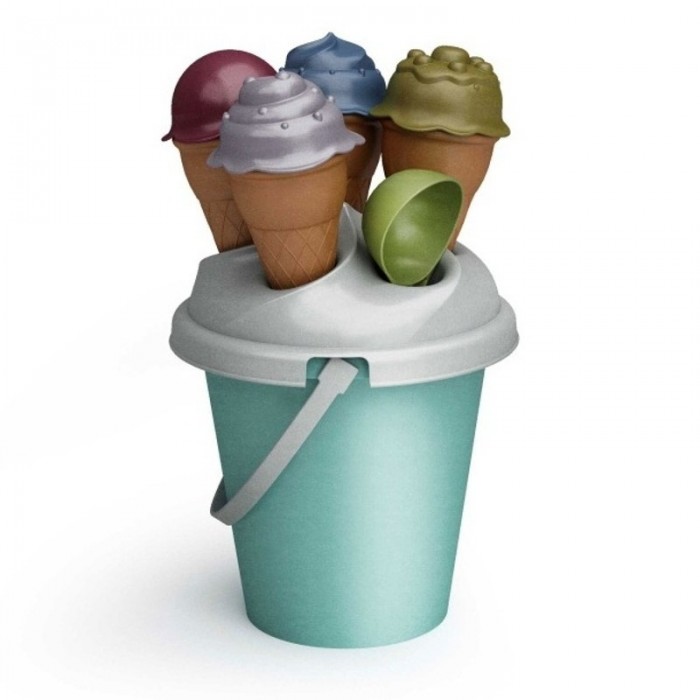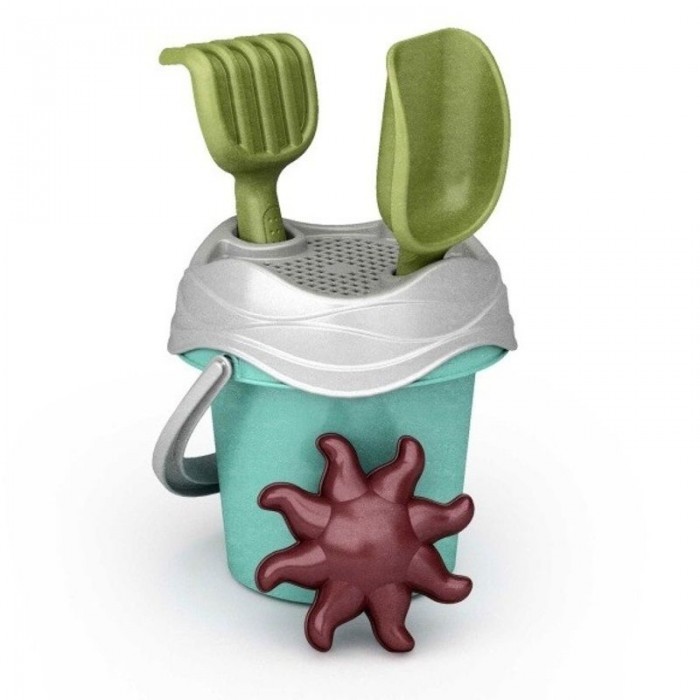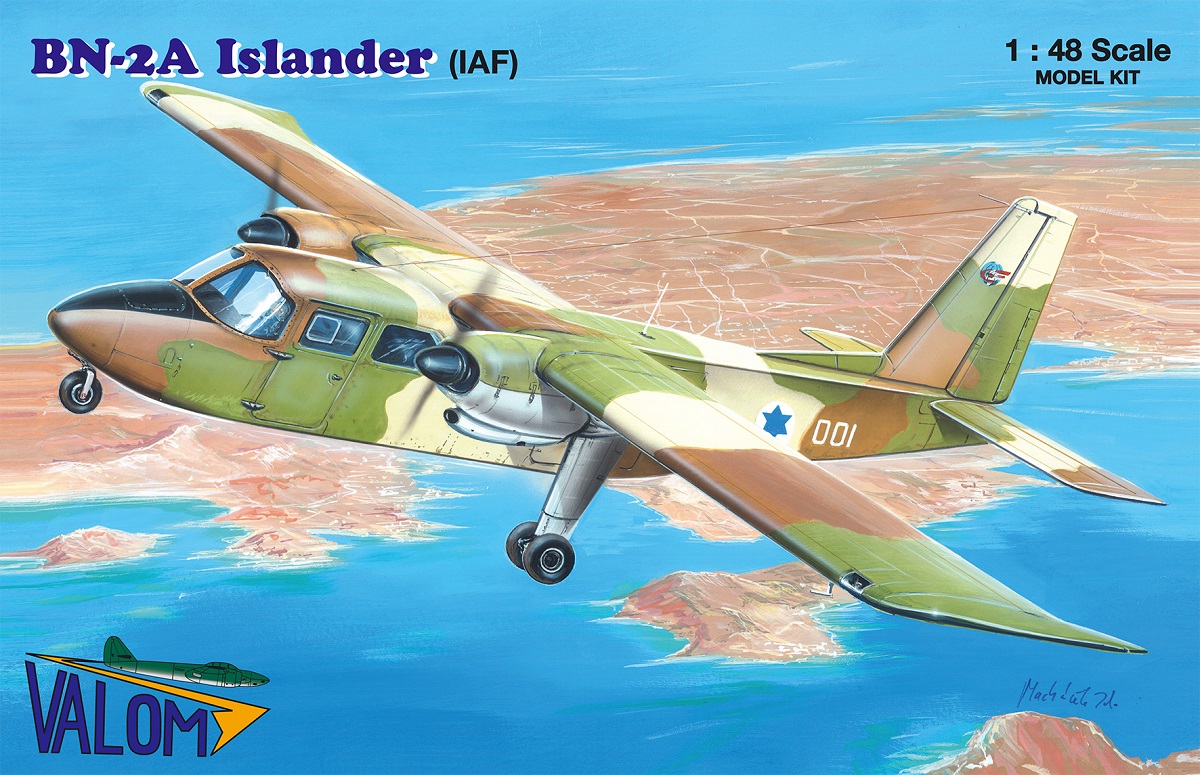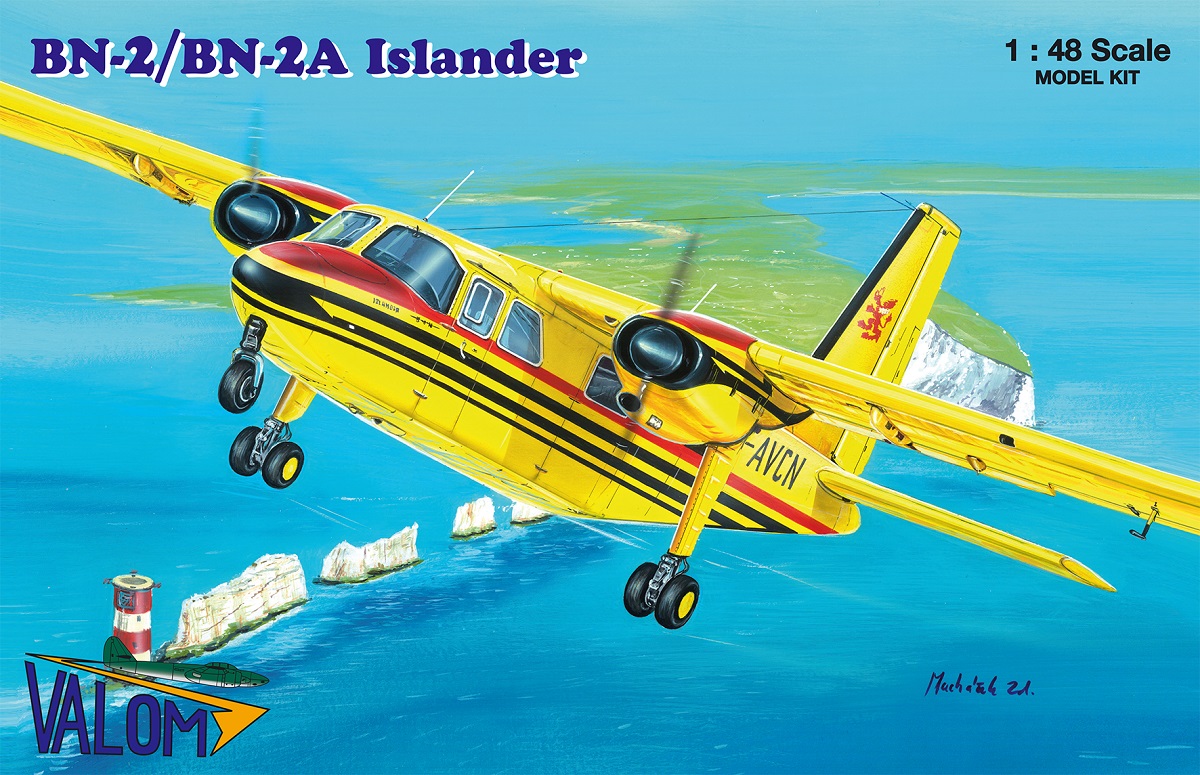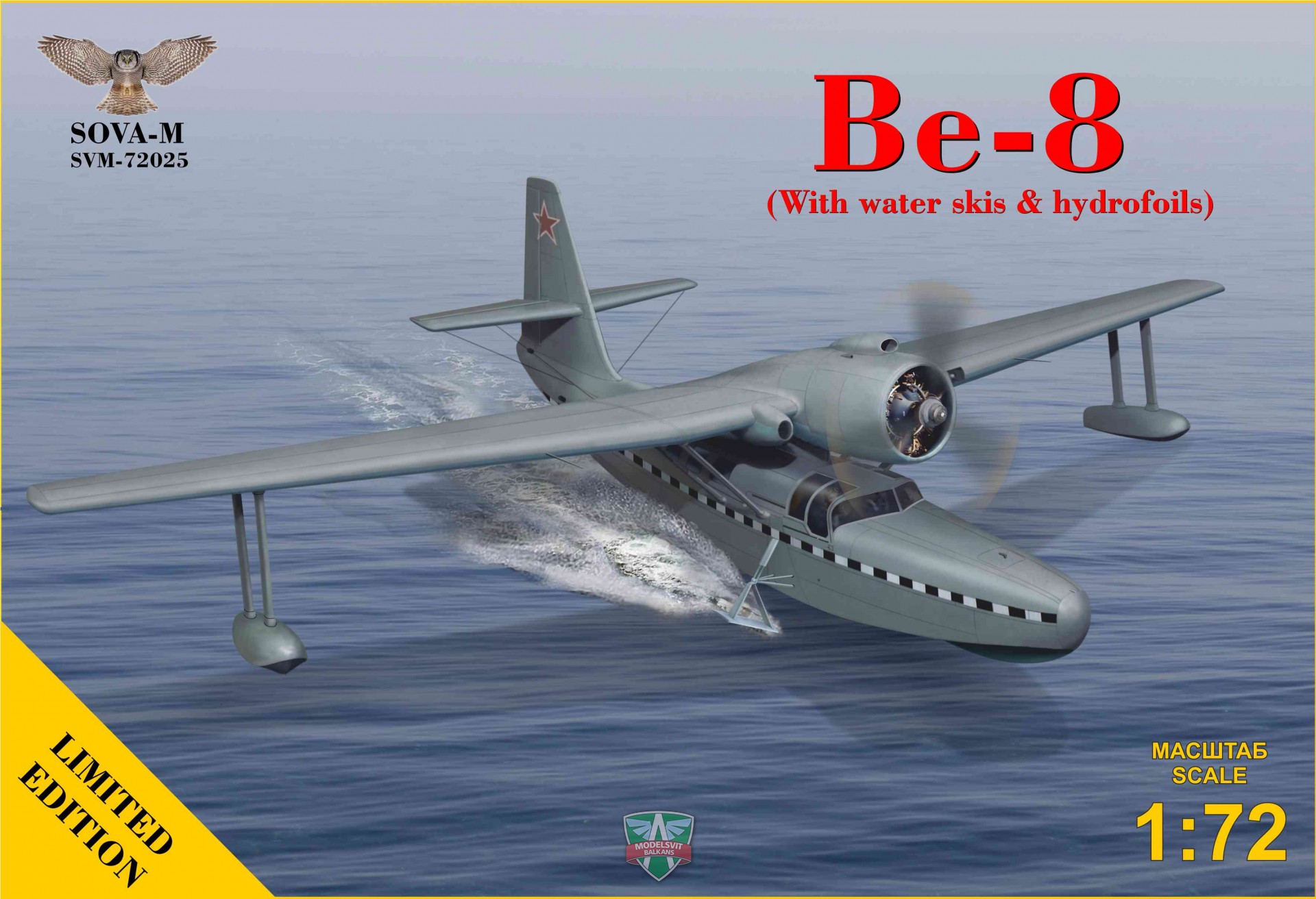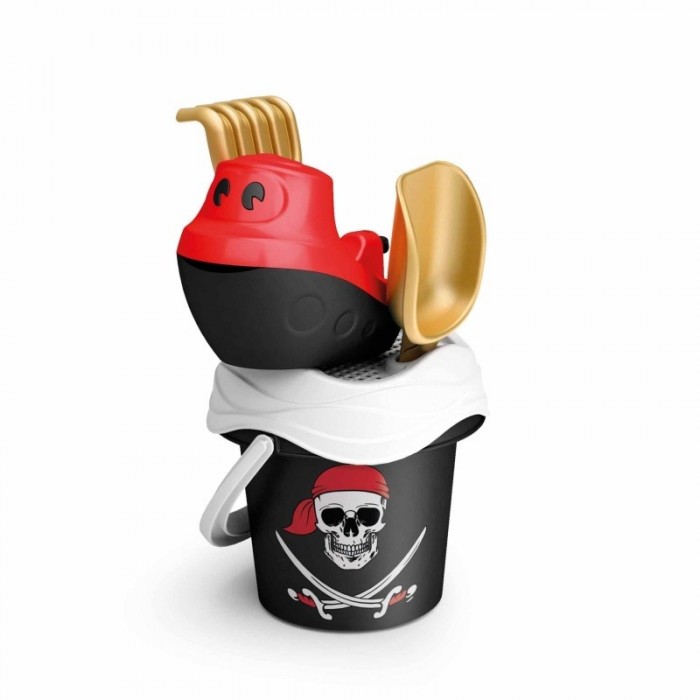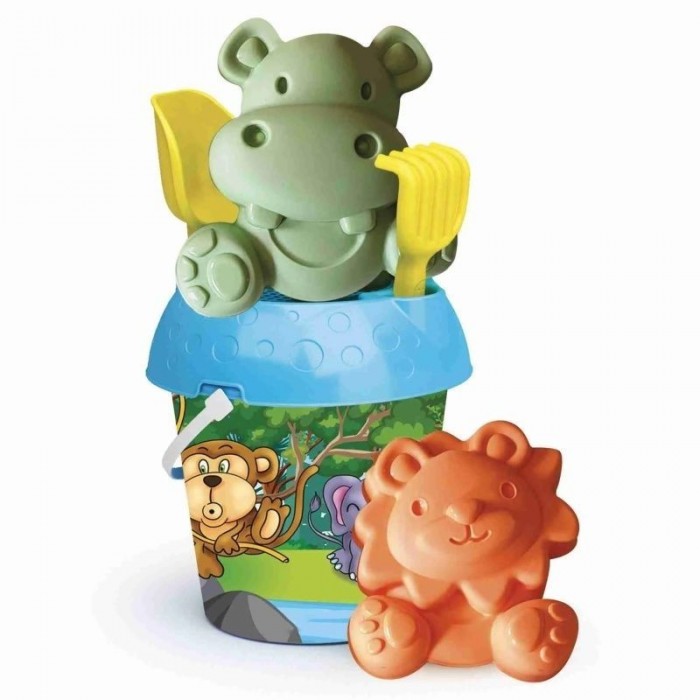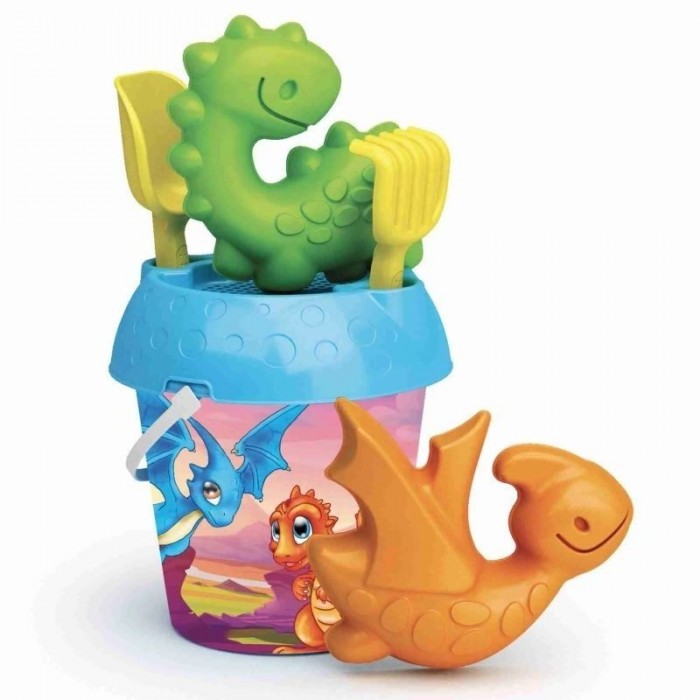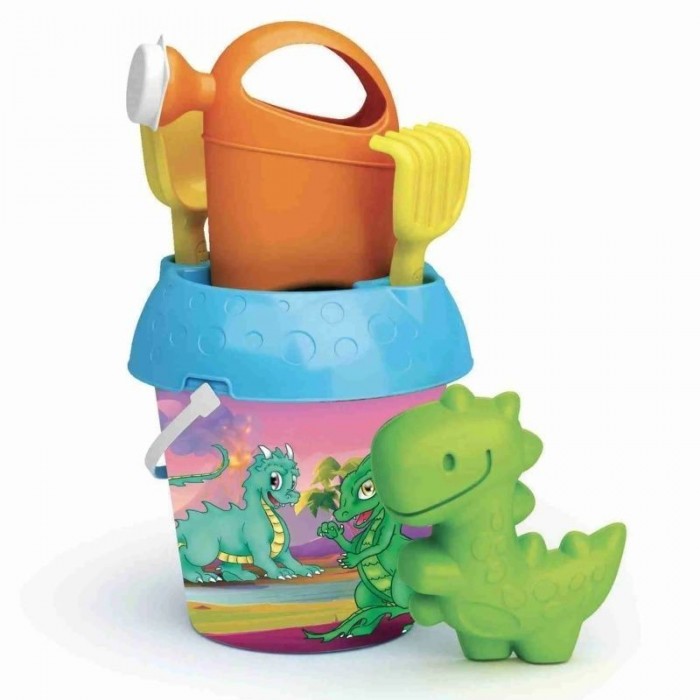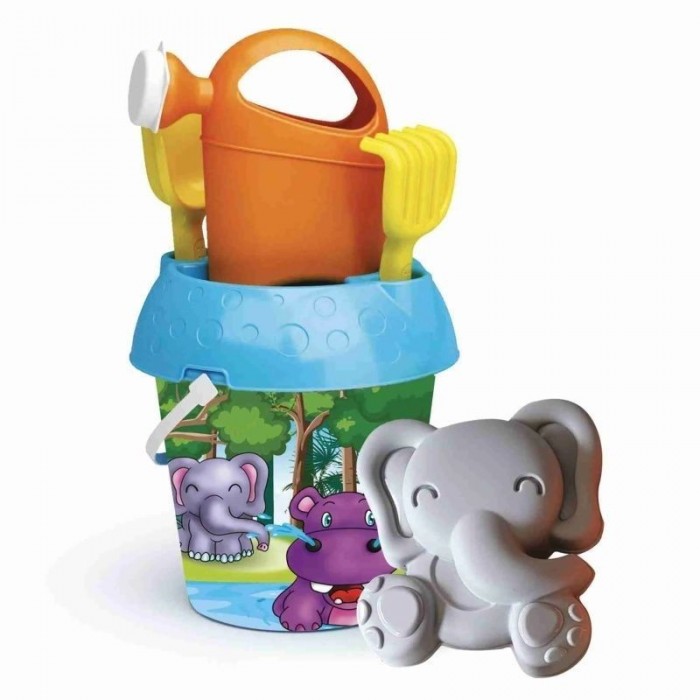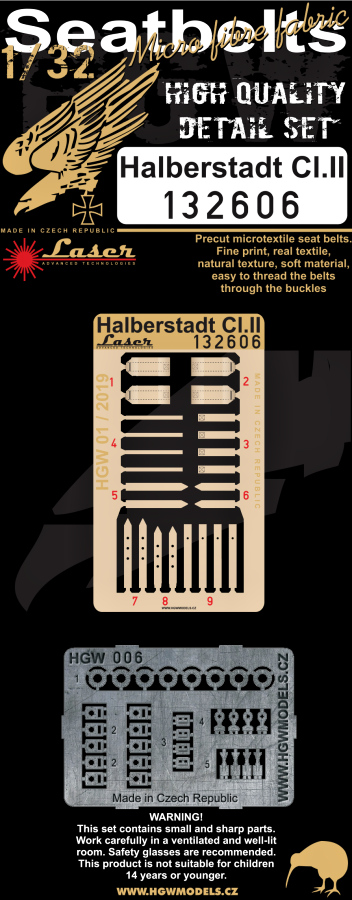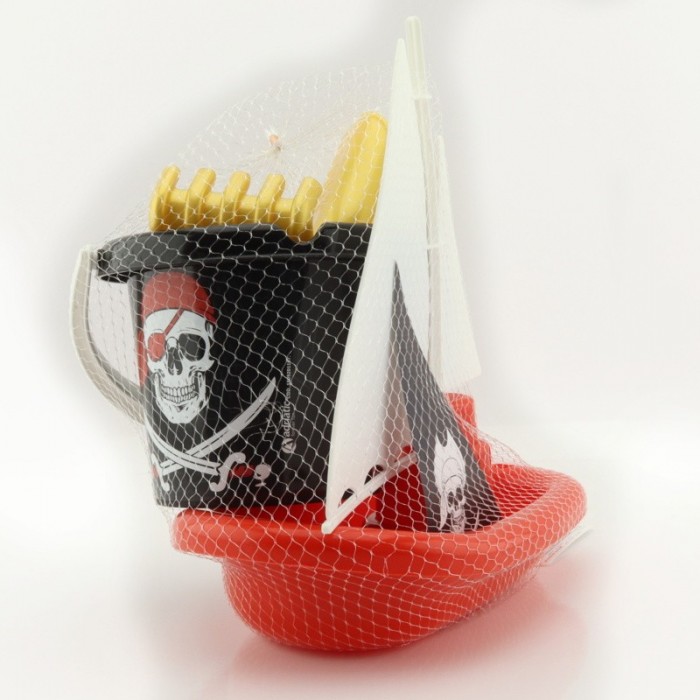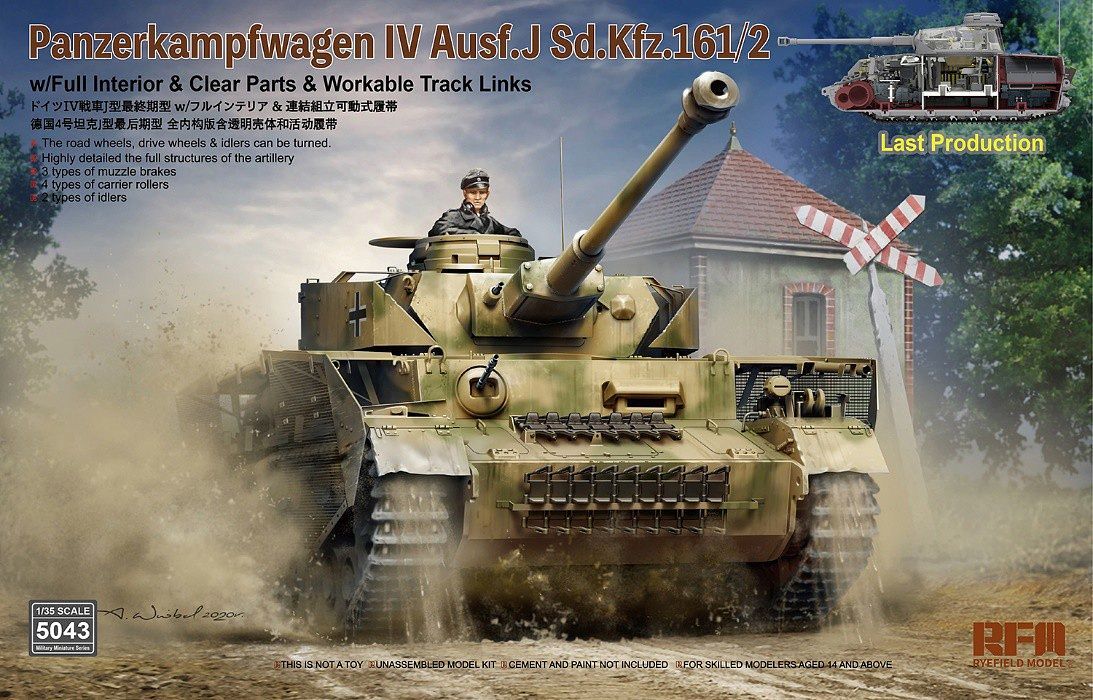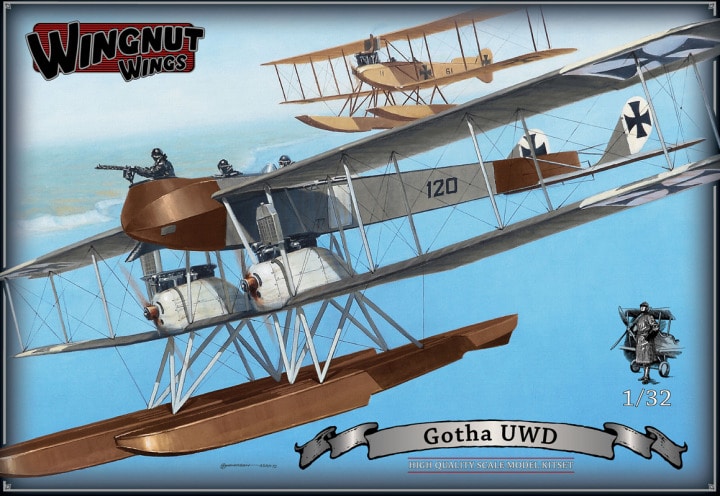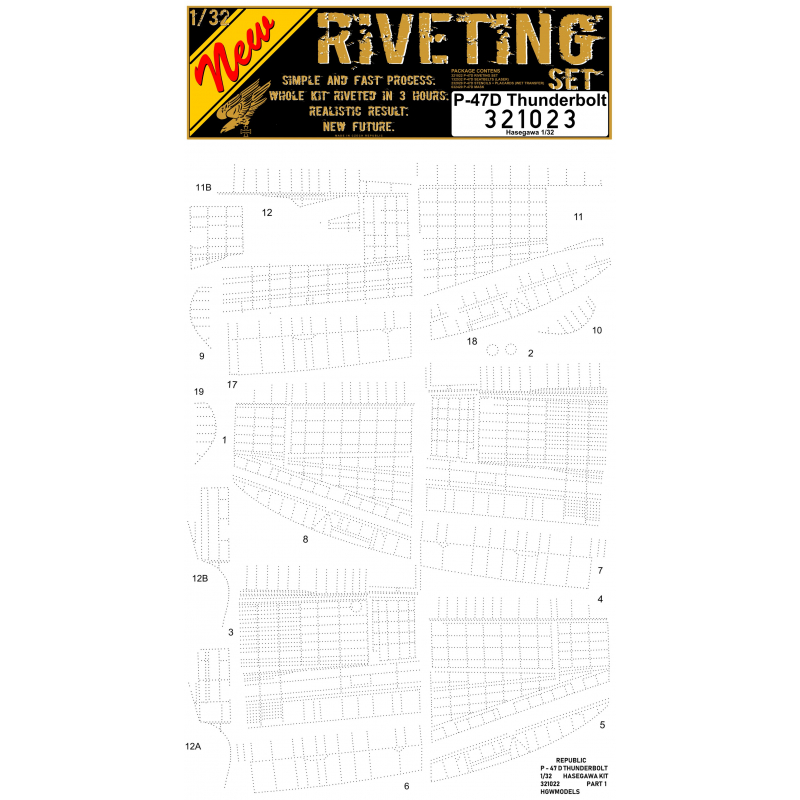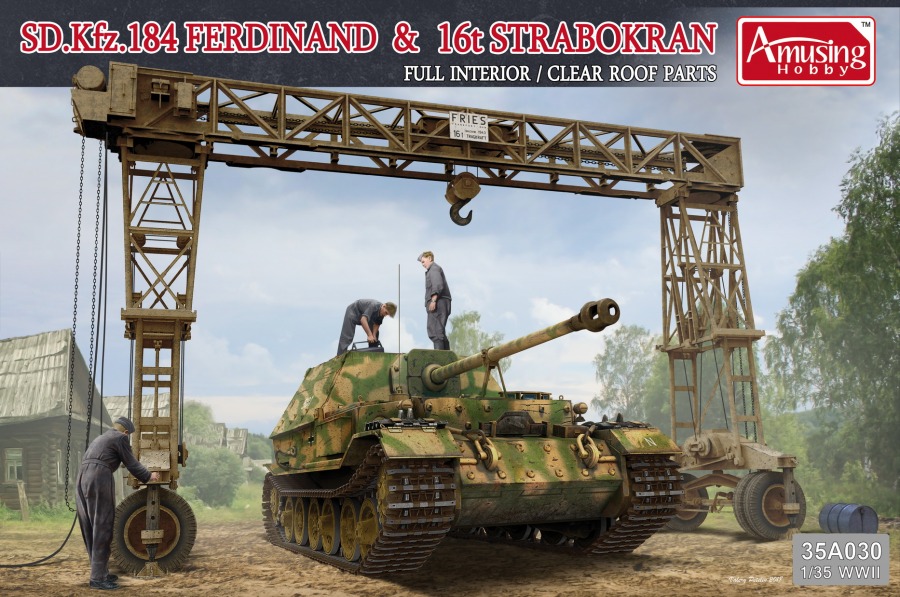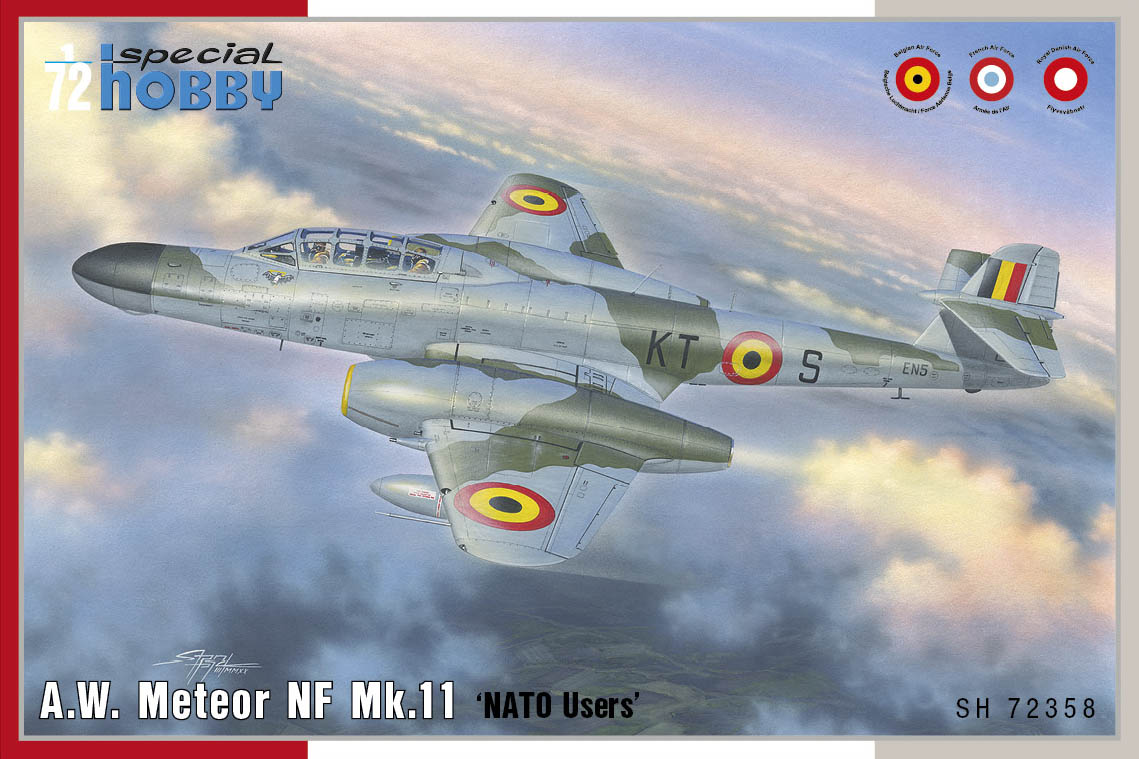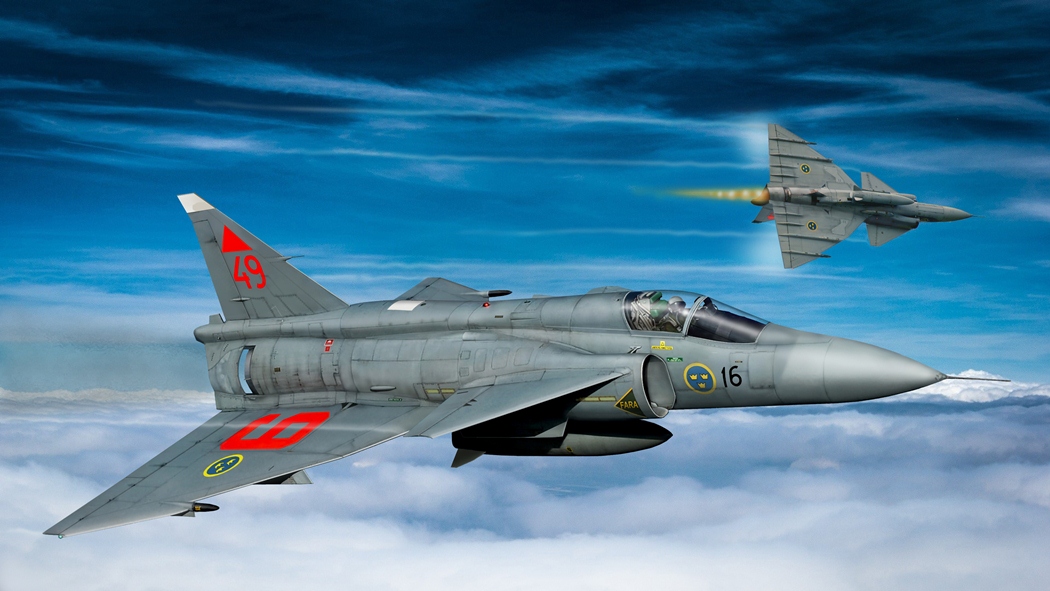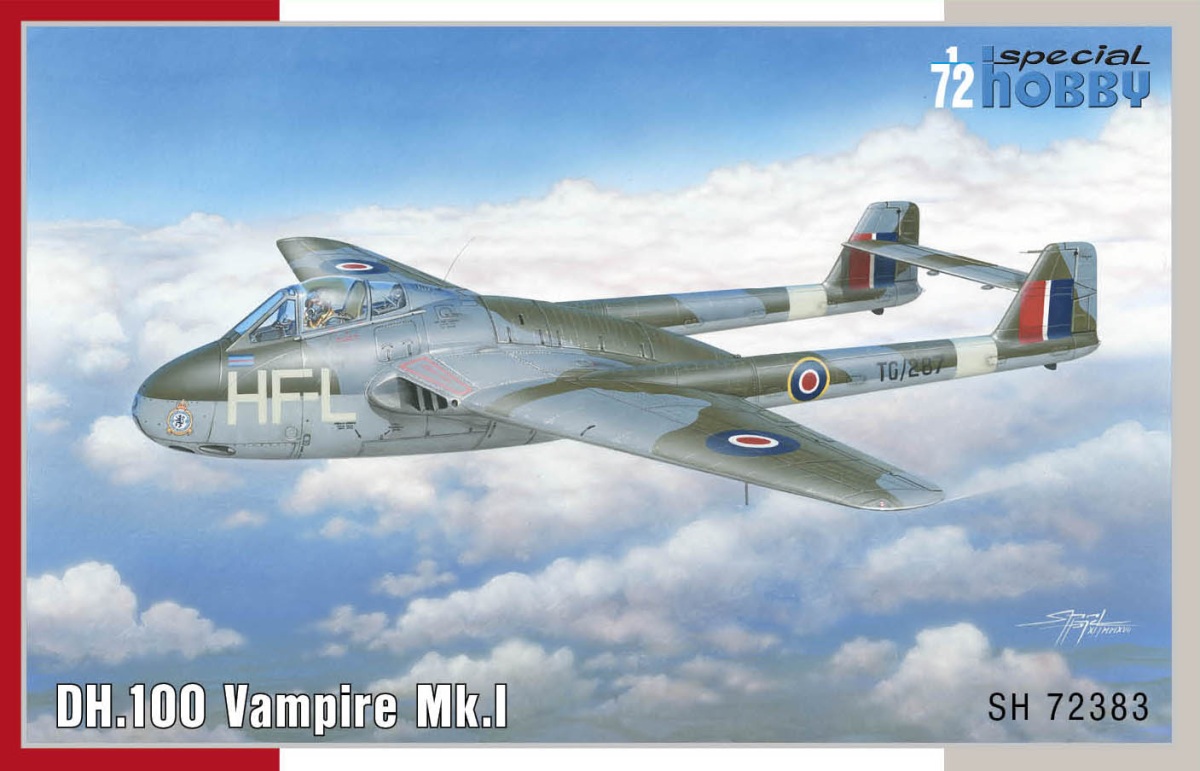Hračky
Celkem 304 produktů
Skvělá ekologická hračka pro malé i velké děti - kýblík, naběračka a čtyři kornouty s sundavacím kopečkem zmrzliny. Super na pláž, do bazénu i do vany.Vyrobeno z recyklovatelného materiálu získaného recyklací nápojových kartonů - díky tomu má specifické barvy a zabarvení - tzv. ekošmouhy. Velikost 27cm , průměr kbelíku - 16 cmVyrobeno v Itálii
Skvělá ekologická hračka pro malé i velké děti - kýblík, sítko, lopatka, malé hrábě a bábovička (různé motivy) Super na pláž, do bazénu i do vany.Vyrobeno z recyklovatelného materiálu získaného recyklací nápojových kartonů - díky tomu má specifické barvy a zabarvení - tzv. ekošmouhy. Velikost 21cm , průměr kbelíku - 13 cmVyrobeno v Itálii
1/48 Britten-Norman BN-2A Islander (IAF). This is an injection-plastic aircraft model kit. This beautifully detailed kit of the Britten-Norman BN-2A Islander is an entirely new mold! The prototype of this general-purpose aircraft made its first flight in 1965, and it is used by more than 500 airlines in more than 120 countries; it is still being produced (with some changes to the engine) after more than 50 years! This particular aircraft was used by more than 10 airlines, including New Japan Airlines, Daiichi Aviation, and Ryukyu Air Commuter in Japan. Includes photo-etched parts and decals for 2 versions; will be about 22.6cm long with a wingspan of 31.1cm when completed. [Mold Color]: Brown, clear [Includes]: Decals, photo-etched parts
1/48 Britten-Norman BN-2/BN-2A Islander. This is an injection-plastic aircraft model kit. This beautifully detailed kit of the Britten-Norman BN-2A Islander is an entirely new mold! The prototype of this general-purpose aircraft made its first flight in 1965, and it is used by more than 500 airlines in more than 120 countries; it is still being produced (with some changes to the engine) after more than 50 years! This particular aircraft was used by more than 10 airlines, including New Japan Airlines, Daiichi Aviation, and Ryukyu Air Commuter in Japan. Includes photo-etched parts and decals for 2 versions; will be about 22.6cm long with a wingspan of 31.1cm when completed. [Mold Color]: Brown, clear [Includes]: Decals, photo-etched parts
1/48 Britten-Norman BN-2A Islander (IAF). This is an injection-plastic aircraft model kit. This beautifully detailed kit of the Britten-Norman BN-2A Islander is an entirely new mold! The prototype of this general-purpose aircraft made its first flight in 1965, and it is used by more than 500 airlines in more than 120 countries; it is still being produced (with some changes to the engine) after more than 50 years! This particular aircraft was used by more than 10 airlines, including New Japan Airlines, Daiichi Aviation, and Ryukyu Air Commuter in Japan. Includes photo-etched parts and decals for 2 versions; will be about 22.6cm long with a wingspan of 31.1cm when completed. [Mold Color]: Brown, clear [Includes]: Decals, photo-etched parts
1/48 Britten-Norman BN-2/BN-2A Islander. This is an injection-plastic aircraft model kit. This beautifully detailed kit of the Britten-Norman BN-2A Islander is an entirely new mold! The prototype of this general-purpose aircraft made its first flight in 1965, and it is used by more than 500 airlines in more than 120 countries; it is still being produced (with some changes to the engine) after more than 50 years! This particular aircraft was used by more than 10 airlines, including New Japan Airlines, Daiichi Aviation, and Ryukyu Air Commuter in Japan. Includes photo-etched parts and decals for 2 versions; will be about 22.6cm long with a wingspan of 31.1cm when completed. [Mold Color]: Brown, clear [Includes]: Decals, photo-etched parts
1/72 KDA-2 type 88-2 scout. The Beriev Be-8 (USAF/DoD reporting name “Type 33”, NATO reporting name “Mole”), was built by the Soviet Beriev OKB in 1947. It was a passenger/liaison amphibian aircraft with a layout similar to the Be-4 but substantially larger and heavier. It was a single engine parasol with the wing installed on a thin pylon and a pair of short struts. Compared to the Be-4, the Be-8 was equipped with retractable landing gear, and pilot and passenger cabins had heating utilizing engine heat. The Be-8 was intended as a civil aircraft and carried no armament. First flight was on December 3, demonstrating good performance. Two experimental aircraft were built, and one was demonstrated during 1951 Soviet Aviation Day at Tushino.One of Be-8 was equipped with hydrofoils, developed at TsAGI. These “Underwater Wings” were installed on landing gear struts and pushed aircraft above the water well before it could be done by the wing lift force. As a result, takeoff was much easier and imposed less punishment on the hull from the waves. Despite very effective during takeoff hydrofoils had negative impact on flight speed. Construction of retractable hydrofoils was not ready, and the concept did not find practical applications.
1/72 BHU-6B / UF-2 "Albatross" (Japan Maritime Self-Defense Force). The Beriev Be-8 (USAF/DoD reporting name “Type 33”, NATO reporting name “Mole”), was built by the Soviet Beriev OKB in 1947. It was a passenger/liaison amphibian aircraft with a layout similar to the Be-4 but substantially larger and heavier. It was a single engine parasol with the wing installed on a thin pylon and a pair of short struts. Compared to the Be-4, the Be-8 was equipped with retractable landing gear, and pilot and passenger cabins had heating utilizing engine heat. The Be-8 was intended as a civil aircraft and carried no armament. First flight was on December 3, demonstrating good performance. Two experimental aircraft were built, and one was demonstrated during 1951 Soviet Aviation Day at Tushino.One of Be-8 was equipped with hydrofoils, developed at TsAGI. These “Underwater Wings” were installed on landing gear struts and pushed aircraft above the water well before it could be done by the wing lift force. As a result, takeoff was much easier and imposed less punishment on the hull from the waves. Despite very effective during takeoff hydrofoils had negative impact on flight speed. Construction of retractable hydrofoils was not ready, and the concept did not find practical applications.
1/72 BHU-6B / UF-2 "Albatross" (Japan Maritime Self-Defense Force). The Beriev Be-8 (USAF/DoD reporting name “Type 33”, NATO reporting name “Mole”), was built by the Soviet Beriev OKB in 1947. It was a passenger/liaison amphibian aircraft with a layout similar to the Be-4 but substantially larger and heavier. It was a single engine parasol with the wing installed on a thin pylon and a pair of short struts. Compared to the Be-4, the Be-8 was equipped with retractable landing gear, and pilot and passenger cabins had heating utilizing engine heat. The Be-8 was intended as a civil aircraft and carried no armament. First flight was on December 3, demonstrating good performance. Two experimental aircraft were built, and one was demonstrated during 1951 Soviet Aviation Day at Tushino.One of Be-8 was equipped with hydrofoils, developed at TsAGI. These “Underwater Wings” were installed on landing gear struts and pushed aircraft above the water well before it could be done by the wing lift force. As a result, takeoff was much easier and imposed less punishment on the hull from the waves. Despite very effective during takeoff hydrofoils had negative impact on flight speed. Construction of retractable hydrofoils was not ready, and the concept did not find practical applications.
1/72 KDA-2 type 88 light bomber. The Beriev Be-8 (USAF/DoD reporting name “Type 33”, NATO reporting name “Mole”), was built by the Soviet Beriev OKB in 1947. It was a passenger/liaison amphibian aircraft with a layout similar to the Be-4 but substantially larger and heavier. It was a single engine parasol with the wing installed on a thin pylon and a pair of short struts. Compared to the Be-4, the Be-8 was equipped with retractable landing gear, and pilot and passenger cabins had heating utilizing engine heat. The Be-8 was intended as a civil aircraft and carried no armament. First flight was on December 3, demonstrating good performance. Two experimental aircraft were built, and one was demonstrated during 1951 Soviet Aviation Day at Tushino.One of Be-8 was equipped with hydrofoils, developed at TsAGI. These “Underwater Wings” were installed on landing gear struts and pushed aircraft above the water well before it could be done by the wing lift force. As a result, takeoff was much easier and imposed less punishment on the hull from the waves. Despite very effective during takeoff hydrofoils had negative impact on flight speed. Construction of retractable hydrofoils was not ready, and the concept did not find practical applications.
1/72 Be-8 passenger amphibian aircraft. The Beriev Be-8 (USAF/DoD reporting name “Type 33”, NATO reporting name “Mole”), was built by the Soviet Beriev OKB in 1947. It was a passenger/liaison amphibian aircraft with a layout similar to the Be-4 but substantially larger and heavier. It was a single engine parasol with the wing installed on a thin pylon and a pair of short struts. Compared to the Be-4, the Be-8 was equipped with retractable landing gear, and pilot and passenger cabins had heating utilizing engine heat. The Be-8 was intended as a civil aircraft and carried no armament. First flight was on December 3, demonstrating good performance. Two experimental aircraft were built, and one was demonstrated during 1951 Soviet Aviation Day at Tushino.One of Be-8 was equipped with hydrofoils, developed at TsAGI. These “Underwater Wings” were installed on landing gear struts and pushed aircraft above the water well before it could be done by the wing lift force. As a result, takeoff was much easier and imposed less punishment on the hull from the waves. Despite very effective during takeoff hydrofoils had negative impact on flight speed. Construction of retractable hydrofoils was not ready, and the concept did not find practical applications.
1/72 Be-8 passenger amphibian aircraft. The Beriev Be-8 (USAF/DoD reporting name “Type 33”, NATO reporting name “Mole”), was built by the Soviet Beriev OKB in 1947. It was a passenger/liaison amphibian aircraft with a layout similar to the Be-4 but substantially larger and heavier. It was a single engine parasol with the wing installed on a thin pylon and a pair of short struts. Compared to the Be-4, the Be-8 was equipped with retractable landing gear, and pilot and passenger cabins had heating utilizing engine heat. The Be-8 was intended as a civil aircraft and carried no armament. First flight was on December 3, demonstrating good performance. Two experimental aircraft were built, and one was demonstrated during 1951 Soviet Aviation Day at Tushino.One of Be-8 was equipped with hydrofoils, developed at TsAGI. These “Underwater Wings” were installed on landing gear struts and pushed aircraft above the water well before it could be done by the wing lift force. As a result, takeoff was much easier and imposed less punishment on the hull from the waves. Despite very effective during takeoff hydrofoils had negative impact on flight speed. Construction of retractable hydrofoils was not ready, and the concept did not find practical applications.
1/72 Be-8 amphibian aircraft (with water skis & hydrofoils). The Beriev Be-8 (USAF/DoD reporting name “Type 33”, NATO reporting name “Mole”), was built by the Soviet Beriev OKB in 1947. It was a passenger/liaison amphibian aircraft with a layout similar to the Be-4 but substantially larger and heavier. It was a single engine parasol with the wing installed on a thin pylon and a pair of short struts. Compared to the Be-4, the Be-8 was equipped with retractable landing gear, and pilot and passenger cabins had heating utilizing engine heat. The Be-8 was intended as a civil aircraft and carried no armament. First flight was on December 3, demonstrating good performance. Two experimental aircraft were built, and one was demonstrated during 1951 Soviet Aviation Day at Tushino.One of Be-8 was equipped with hydrofoils, developed at TsAGI. These “Underwater Wings” were installed on landing gear struts and pushed aircraft above the water well before it could be done by the wing lift force. As a result, takeoff was much easier and imposed less punishment on the hull from the waves. Despite very effective during takeoff hydrofoils had negative impact on flight speed. Construction of retractable hydrofoils was not ready, and the concept did not find practical applications.
1/72 KDA-2 type 88-1 scout. The Beriev Be-8 (USAF/DoD reporting name “Type 33”, NATO reporting name “Mole”), was built by the Soviet Beriev OKB in 1947. It was a passenger/liaison amphibian aircraft with a layout similar to the Be-4 but substantially larger and heavier. It was a single engine parasol with the wing installed on a thin pylon and a pair of short struts. Compared to the Be-4, the Be-8 was equipped with retractable landing gear, and pilot and passenger cabins had heating utilizing engine heat. The Be-8 was intended as a civil aircraft and carried no armament. First flight was on December 3, demonstrating good performance. Two experimental aircraft were built, and one was demonstrated during 1951 Soviet Aviation Day at Tushino.One of Be-8 was equipped with hydrofoils, developed at TsAGI. These “Underwater Wings” were installed on landing gear struts and pushed aircraft above the water well before it could be done by the wing lift force. As a result, takeoff was much easier and imposed less punishment on the hull from the waves. Despite very effective during takeoff hydrofoils had negative impact on flight speed. Construction of retractable hydrofoils was not ready, and the concept did not find practical applications.
1/72 KDA-2 type 88 light bomber. The Beriev Be-8 (USAF/DoD reporting name “Type 33”, NATO reporting name “Mole”), was built by the Soviet Beriev OKB in 1947. It was a passenger/liaison amphibian aircraft with a layout similar to the Be-4 but substantially larger and heavier. It was a single engine parasol with the wing installed on a thin pylon and a pair of short struts. Compared to the Be-4, the Be-8 was equipped with retractable landing gear, and pilot and passenger cabins had heating utilizing engine heat. The Be-8 was intended as a civil aircraft and carried no armament. First flight was on December 3, demonstrating good performance. Two experimental aircraft were built, and one was demonstrated during 1951 Soviet Aviation Day at Tushino.One of Be-8 was equipped with hydrofoils, developed at TsAGI. These “Underwater Wings” were installed on landing gear struts and pushed aircraft above the water well before it could be done by the wing lift force. As a result, takeoff was much easier and imposed less punishment on the hull from the waves. Despite very effective during takeoff hydrofoils had negative impact on flight speed. Construction of retractable hydrofoils was not ready, and the concept did not find practical applications.
1/72 KDA-2 type 88-1 scout. The Beriev Be-8 (USAF/DoD reporting name “Type 33”, NATO reporting name “Mole”), was built by the Soviet Beriev OKB in 1947. It was a passenger/liaison amphibian aircraft with a layout similar to the Be-4 but substantially larger and heavier. It was a single engine parasol with the wing installed on a thin pylon and a pair of short struts. Compared to the Be-4, the Be-8 was equipped with retractable landing gear, and pilot and passenger cabins had heating utilizing engine heat. The Be-8 was intended as a civil aircraft and carried no armament. First flight was on December 3, demonstrating good performance. Two experimental aircraft were built, and one was demonstrated during 1951 Soviet Aviation Day at Tushino.One of Be-8 was equipped with hydrofoils, developed at TsAGI. These “Underwater Wings” were installed on landing gear struts and pushed aircraft above the water well before it could be done by the wing lift force. As a result, takeoff was much easier and imposed less punishment on the hull from the waves. Despite very effective during takeoff hydrofoils had negative impact on flight speed. Construction of retractable hydrofoils was not ready, and the concept did not find practical applications.
1/72 KDA-2 type 88-2 scout. The Beriev Be-8 (USAF/DoD reporting name “Type 33”, NATO reporting name “Mole”), was built by the Soviet Beriev OKB in 1947. It was a passenger/liaison amphibian aircraft with a layout similar to the Be-4 but substantially larger and heavier. It was a single engine parasol with the wing installed on a thin pylon and a pair of short struts. Compared to the Be-4, the Be-8 was equipped with retractable landing gear, and pilot and passenger cabins had heating utilizing engine heat. The Be-8 was intended as a civil aircraft and carried no armament. First flight was on December 3, demonstrating good performance. Two experimental aircraft were built, and one was demonstrated during 1951 Soviet Aviation Day at Tushino.One of Be-8 was equipped with hydrofoils, developed at TsAGI. These “Underwater Wings” were installed on landing gear struts and pushed aircraft above the water well before it could be done by the wing lift force. As a result, takeoff was much easier and imposed less punishment on the hull from the waves. Despite very effective during takeoff hydrofoils had negative impact on flight speed. Construction of retractable hydrofoils was not ready, and the concept did not find practical applications.
1/72 Be-8 amphibian aircraft (with water skis & hydrofoils). The Beriev Be-8 (USAF/DoD reporting name “Type 33”, NATO reporting name “Mole”), was built by the Soviet Beriev OKB in 1947. It was a passenger/liaison amphibian aircraft with a layout similar to the Be-4 but substantially larger and heavier. It was a single engine parasol with the wing installed on a thin pylon and a pair of short struts. Compared to the Be-4, the Be-8 was equipped with retractable landing gear, and pilot and passenger cabins had heating utilizing engine heat. The Be-8 was intended as a civil aircraft and carried no armament. First flight was on December 3, demonstrating good performance. Two experimental aircraft were built, and one was demonstrated during 1951 Soviet Aviation Day at Tushino.One of Be-8 was equipped with hydrofoils, developed at TsAGI. These “Underwater Wings” were installed on landing gear struts and pushed aircraft above the water well before it could be done by the wing lift force. As a result, takeoff was much easier and imposed less punishment on the hull from the waves. Despite very effective during takeoff hydrofoils had negative impact on flight speed. Construction of retractable hydrofoils was not ready, and the concept did not find practical applications.
Tamiya Paint Retarder (Lacquer). This retarder is perfect for use when brush-painting lacquer paints. It slows the drying process, helping eliminate surface imperfections from brush bristles, giving a smooth and lustrous finish. Can be used up to a ratio of 1:10 (retarder:paint) when mixing. Contents: 40ml.
Skvělá hračka pro malé i velké - koupací plastová loďka a sada na písek - kýblík, sítko, lopatka a malé hrábě.Super na pláž, do bazénu i do vany.Hračka vyrobená ze 100% recyklovatelného, velmi pevného, netoxického, zdravotně nezávadného a slunci a vodě odolného plastu.Velikost - loďka 13 cm, kýblík se sítkem 19 cm (bez ucha), průměr 13cmVyrobeno v Itálii
Skvělá hračka pro malé i velké - sada na písek s motivem safari zvířátek - kýblík, sítko, lopatka, malé hrábě a dvě bábovičky (různé motivy) Super na pláž, pískoviště i do bazénu. Hračka vyrobená ze 100% recyklovatelného, velmi pevného, netoxického, zdravotně nezávadného a slunci a vodě odolného plastu. Velikost - kýblík se sítkem 19 cm (bez ucha), průměr 18cm Vyrobeno v Itálii
Skvělá hračka pro malé i velké - sada na písek s motivem pravěk a dino - kýblík, sítko, lopatka, malé hrábě a dvě bábovičky (různé motivy) Super na pláž, pískoviště i do bazénu. Hračka vyrobená ze 100% recyklovatelného, velmi pevného, netoxického, zdravotně nezávadného a slunci a vodě odolného plastu. Velikost - kýblík se sítkem 19 cm (bez ucha), průměr 18cm Vyrobeno v Itálii
Skvělá hračka pro malé i velké - sada na písek s motivem pravěk a dino - kýblík, malá konev, sítko, lopatka, malé hrábě a bábovička (různé motivy)Super na pláž, pískoviště i do bazénu.Hračka vyrobená ze 100% recyklovatelného, velmi pevného, netoxického, zdravotně nezávadného a slunci a vodě odolného plastu.Velikost - kýblík se sítkem 19 cm (bez ucha), průměr 18cmVyrobeno v Itálii
Skvělá hračka pro malé i velké - sada na písek s motivem safari zvířátek - kýblík, malá konev, sítko, lopatka, malé hrábě a bábovička (různé motivy)Super na pláž, pískoviště i do bazénu.Hračka vyrobená ze 100% recyklovatelného, velmi pevného, netoxického, zdravotně nezávadného a slunci a vodě odolného plastu.Velikost - kýblík se sítkem 19 cm (bez ucha), průměr 18cmVyrobeno v Itálii
Plastikový model letadla 1/48 Reggiane Re 2000 I. Serie. Just before the outbreak of WW2, the Reggiane Re 2000 took part in the competition for the standard fighter which was to serve with the Italian air force. Even though the type offered quite high performance, it eventually did not win, so the most of the production was offered for export. The Regia Aeronautica, however, decided to give the type a try and deployed it mainly in the dangerous operations against Malta. The model kit contains four styrene sprues and one with clear parts. The wing sprue has its origins in the Classic Airframes kit while all the other components are brand new, the small ones being produced from metal moulds. Italian WW2 fighter aeroplane three eye-catching marking options bearing the Italian mottle camouflage pattern we also offer separate resin sets and pre-cut masks
Plastikový model letadla 1/48 Reggiane Re 2000 I. Serie. Just before the outbreak of WW2, the Reggiane Re 2000 took part in the competition for the standard fighter which was to serve with the Italian air force. Even though the type offered quite high performance, it eventually did not win, so the most of the production was offered for export. The Regia Aeronautica, however, decided to give the type a try and deployed it mainly in the dangerous operations against Malta. The model kit contains four styrene sprues and one with clear parts. The wing sprue has its origins in the Classic Airframes kit while all the other components are brand new, the small ones being produced from metal moulds. Italian WW2 fighter aeroplane three eye-catching marking options bearing the Italian mottle camouflage pattern we also offer separate resin sets and pre-cut masks
1/32 Halberstadt CI.II - Fabric Seat Belts - pre-cut (laser). Accessory designed for vintage model aircraft by Wingnut Wings. Seat belts from HGW Models are laser-cut so it is easy-to-use product. Set contains micro fabric belts and photo etched buckles suitable for large scale planes in 1/32 scale.
1/32 Halberstadt CI.II - Fabric Seat Belts - pre-cut (laser). Accessory designed for vintage model aircraft by Wingnut Wings. Seat belts from HGW Models are laser-cut so it is easy-to-use product. Set contains micro fabric belts and photo etched buckles suitable for large scale planes in 1/32 scale.
Panuje venku horký letní den? Navštívili jste se svými dětmi bazén, koupaliště nebo aquapark? Dopřejte jim zábavu ve vodě a pořiďte jim nafukovací člun Bestway. Svého potomka usadíte do člunu a pomocí lanka uchyceného na plastovém oušku je taháte za sebou nebo je necháte volně plout po hladině. Vytvořte si společné vzpomínky na parné léto. Hlavní přednosti Pro více zábavy v bazénu Lanko / provaz pro tahání člunu Pozorování dění pod hladinou skrze průhledné okénko Z kvalitního a odolného vinylu Krásný barevný design Krásný a pohodlný člun Dětský člun Bestway má kromě svých stěn také nafukovací dno, proto na něm vaše dcera či syn sedí pohodlně. Člun se vyrábí z kvalitního vinylu, který odolá určité zátěži. Díky průhlednému okénku pozorují dění pod hladinou. Vaše děti nadchne ale také krásný a veselý design s obrázky mořských zvířat. Poznámka: Barevné varianty jsou dodávány náhodně. Používejte pouze pod dohledem dospělé osoby. Specifikace Značka: Bestway Model: Kiddie Raft Určení: nafukovací člun Parametry Vhodný věk dětí: od 3 do 6 let Rozměry vyfouknutého člunu: 102 x 69 cm Rozměry nafouknutého člunu: 91 x 61 x 20 cm Obsah balení 1x člun Bestway
Skvělá hračka pro malé i velké - koupací plastová loďka a sada na písek - kýblík, lopatka a malé hrábě. Super na pláž, do bazénu i do vany. Hračka vyrobená ze 100% recyklovatelného, velmi pevného, netoxického, zdravotně nezávadného a slunci a vodě odolného plastu. Motiv pirátské plachty je nalepovací - plachtu můžete nechat pouze bílou - bez nálepky. Velikost - loďka 22 x 14 x 25 cm, kýblík výška 11cm (bez ucha) Vyrobeno v Itálii
Tamiya Metal Primer Spray for Undercoating Metal Parts - 100 ml. Aluminum, photo-etched, die cast and pressed metal parts increase the realism and strength of plastic models. This clear spray primer for treating metallic parts does not damage plastic, and applied as an undercoat, it will prevent paint from peeling off of metal parts.contents: 100ml.
1/35 Panzer IV Ausf.J last production - full interior. The No, IV Type J tank was the final version of the No. IV tank series, and was simplified from previous versions to improve productivity. The biggest change from the H-type is the removal of the turret rotation motor and auxiliary engine for power generation; this allowed the turret to be turned manually. By removing these items and adding a fuel tank, the tank's cruising range was increased from 210km to 320km on level ground. This kit from Rye Field Model has a newly molded full interior! It also has clear parts for the turret and upper hull, in addition to the normal parts. The tracks are of the linkable assembly type, and the suspension is movable; it comes with three types of muzzle brakes, two types of guide wheels and four types of upper wheels. Photo-etched parts and decals for three versions are also included. [Includes]: Photo-etched parts, decals for 3 versions
1/35 Panzer IV Ausf.J last production - full interior. The No, IV Type J tank was the final version of the No. IV tank series, and was simplified from previous versions to improve productivity. The biggest change from the H-type is the removal of the turret rotation motor and auxiliary engine for power generation; this allowed the turret to be turned manually. By removing these items and adding a fuel tank, the tank's cruising range was increased from 210km to 320km on level ground. This kit from Rye Field Model has a newly molded full interior! It also has clear parts for the turret and upper hull, in addition to the normal parts. The tracks are of the linkable assembly type, and the suspension is movable; it comes with three types of muzzle brakes, two types of guide wheels and four types of upper wheels. Photo-etched parts and decals for three versions are also included. [Includes]: Photo-etched parts, decals for 3 versions
Tamiya Basic File Set (Smooth Double-Cut) - Sada oboustraných pilníků. This set of 3 files includes flat, hemispherical and round files for use in the construction of plastic models, Mini 4WD models, and even for metal-working. The files are double-cut and their smooth cut provides an equally-smooth finish on the material being worked. A special coating is applied to the grip to make it extremely comfortable to hold.
1/32 Gotha UWD. Highly detailed plastic Model kit with PE parts to build a planeScale 1:32not built/painted The unique Gotha UWD was one of several different twin engine seaplanes ordered by the German Navy to fit their requirements for a long range reconnaissance and torpedo carrying aircraft (although there is no evidence to suggest it was ever armed with a torpedo). The Gotha UWD was developed from the G.1 land plane and was completed in December 1915. It was described as easy to fly, able to take to the air with ease and was smooth on landing. In a preview of things to come, Gotha UWD 120 was used to bomb England during early 1916. -274 high-quality injection moulded plastic parts. -4 photo-etched metal detail parts. -2x Daimler-Mercedes 160hp D.III engines. -63cm wingspan. -10kg Carbonit bombs & bomb dropping ‘proboscis’, counter rotating propellers and optional map & document case and camera. -24 page fully illustrated instruction manual. -High quality Cartograf decals for Gotha UWD 120 which served with See Flieger Abteilung 1 in 1916
Vlastníte dětský koutek nebo bazének? Pořiďte si k němu sadu plastových míčků Marimex. Nasypete je do bazénu a necháte své děti, aby se s nimi zabavily. Míčky se vyrábí z plastu a jsou v pestrém barevném provedení. V balení jich najdete celkem 100 kusů. Využijete je jak pro domácí využití, tak na dětských oslavách narozenin. Hlavní přednosti Velké množství míčků v balení Pestrobarevné provedení Specifikace Značka: Marimex Určení: míčky Vhodný věk dítěte: od 1 roku Počet míčků v balení: 100 ks Materiál: plast Průměr míčku: 6 cm Obsah balení 1x sada míčků
Vlastníte dětský koutek nebo bazének? Pořiďte si k němu sadu plastových míčků Marimex. Nasypete je do bazénu a necháte své děti, aby se s nimi zabavily. Míčky se vyrábí z plastu a jsou v pestrém barevném provedení. V balení jich najdete celkem 100 kusů. Využijete je jak pro domácí využití, tak na dětských oslavách narozenin. Hlavní přednosti Velké množství míčků v balení Pestrobarevné provedení Specifikace Značka: Marimex Určení: míčky Vhodný věk dítěte: od 1 roku Počet míčků v balení: 100 ks Materiál: plast Průměr míčku: 6 cm Obsah balení 1x sada míčků
Nafukovací lehátko Bestway v designu nanuku je ideálním doplňkem do vašeho bazénu nebo na dovolenou u vody! Lehátko je vyrobeno z kvalitního a odolného vinylu s robustní konstrukcí. Lehátko má 2 vzduchové komory. Určeno pro 1 dospělou osobu. Specifikace Značka: Bestway Motiv: nanuk Maximální nosnost: 90 kg Barva: mix barev Materiál: vinyl Rozměr: 185 x 89 cm Hmotnost balení: 1,05 kg Rozměry balení: 24 x 24 x 5 cm Obsah balení 1x nafukovací lehátko Bestway 1x opravná sada
1/32 P-47D Thunderbolt - Super Riveting Set - Riveting Sets - Hasegawa. Package contents:1x P-47D - Riveting Set 1/32 - 3210221x P-47D Thunderbolt - Stencils + Placard - 1/32 - 2320291x P-47D Thunderbolt - Seatbelts 1/32 - 1325321x P-47D Thunderbolt - Masks 1/32 - 632420 Instructions:Convenient undercoat is Mr. Surfacer 1000 or Mr. Base White 1000.*Wipe the surface with a damp cloth, remove dust and grease.Cut the required part from riveting sheet.Remove top translucent paper and dip rivets in the warm water for approx. 15 seconds.When rivets are separated from its carrier paper apply them on the surface. We recommend to use a spot of Mr. Mark Softer.Find appropriate position and then push the liquid from below the transfer. The purpose is to get each rivet in touch with the surface.Let it dry for min. 2 hours, but optimal time could be e.g. over the night.Finally pull of the top transparent foil / film with sharp tweezers and clean the marks caused by transfer glue.* While application on coloured surfaces it is needed to make a test of adhesion and of time which is necessary for appropriate attaching of rivets. Generally the smoother surface the more time needed.
1/32 P-47D Thunderbolt - Super Riveting Set - Riveting Sets - Hasegawa. Package contents:1x P-47D - Riveting Set 1/32 - 3210221x P-47D Thunderbolt - Stencils + Placard - 1/32 - 2320291x P-47D Thunderbolt - Seatbelts 1/32 - 1325321x P-47D Thunderbolt - Masks 1/32 - 632420 Instructions:Convenient undercoat is Mr. Surfacer 1000 or Mr. Base White 1000.*Wipe the surface with a damp cloth, remove dust and grease.Cut the required part from riveting sheet.Remove top translucent paper and dip rivets in the warm water for approx. 15 seconds.When rivets are separated from its carrier paper apply them on the surface. We recommend to use a spot of Mr. Mark Softer.Find appropriate position and then push the liquid from below the transfer. The purpose is to get each rivet in touch with the surface.Let it dry for min. 2 hours, but optimal time could be e.g. over the night.Finally pull of the top transparent foil / film with sharp tweezers and clean the marks caused by transfer glue.* While application on coloured surfaces it is needed to make a test of adhesion and of time which is necessary for appropriate attaching of rivets. Generally the smoother surface the more time needed.
1/35 Sd.Kfz.184 Ferdinand & 16t Strabokran. DESCRIPTION This is an injection-plastic military vehicle model kit. From Amusing Hobby comes a 2-in-1 kit of the Ferdinand Jagdpanzer Sd.Kfz. 184 and 16t Strabokran! The characteristic feature of the Ferdinand was that it was generated by two gasoline engines and driven by an electric motor. By using a motor as the driving unit, no transmission was required. In the past, this vehicle was said to have a lot of breakdowns for this reason, but some recent documents have reported that there were fewer breakdowns than some vehicles equipped with transmissions. On the Eastern Front, the Ferdinand's appearance had a great impact. Strabokrans are gate-type mobile cranes used by German field maintenance teams during tank maintenance and repairs. About 100 units were manufactured and used in German armored divisions and heavy tank battalions. Kit features: The Ferdinand's interior layout can be enjoyed even after completion thanks to the included transparent parts. The kit recreates the precise details of the Strabokran, and it can assembled in its working state. [Mold Color]: Tan, brown [Includes]: Clear parts, photo-etched parts Release Date:Sep 2019 Item Size/Weight:39.8cm x 26.3cm x 19.5cm / 1680g
1/35 Sd.Kfz.184 Ferdinand & 16t Strabokran. DESCRIPTION This is an injection-plastic military vehicle model kit. From Amusing Hobby comes a 2-in-1 kit of the Ferdinand Jagdpanzer Sd.Kfz. 184 and 16t Strabokran! The characteristic feature of the Ferdinand was that it was generated by two gasoline engines and driven by an electric motor. By using a motor as the driving unit, no transmission was required. In the past, this vehicle was said to have a lot of breakdowns for this reason, but some recent documents have reported that there were fewer breakdowns than some vehicles equipped with transmissions. On the Eastern Front, the Ferdinand's appearance had a great impact. Strabokrans are gate-type mobile cranes used by German field maintenance teams during tank maintenance and repairs. About 100 units were manufactured and used in German armored divisions and heavy tank battalions. Kit features: The Ferdinand's interior layout can be enjoyed even after completion thanks to the included transparent parts. The kit recreates the precise details of the Strabokran, and it can assembled in its working state. [Mold Color]: Tan, brown [Includes]: Clear parts, photo-etched parts Release Date:Sep 2019 Item Size/Weight:39.8cm x 26.3cm x 19.5cm / 1680g
Plastikový model letadla 1/72 A.W. Meteor NF Mk.11 ‘Nato Users’. This British all weather twin jet fighter aeroplane not only served quite a long time with the RAF, it was also exported with considerable success to a number of NATO countries as well as to the Middle East. four grey styrene sprues, one clear plastic sprue. decal sheet covering three options come with a full set of airframe stencils marking options for a Belgian, French and a Danish machines
Plastikový model letadla 1/72 A.W. Meteor NF Mk.11 ‘Nato Users’. This British all weather twin jet fighter aeroplane not only served quite a long time with the RAF, it was also exported with considerable success to a number of NATO countries as well as to the Middle East. four grey styrene sprues, one clear plastic sprue. decal sheet covering three options come with a full set of airframe stencils marking options for a Belgian, French and a Danish machines
1/48 SAAB JA37 Viggen fighter. The JA37 Viggen was a Swedish medium-heavy fighter with a secondary role as attack aircraft. It was manufactured by Saab AB. The fighter version of the Viggen was the most common and recently developed of the Viggen variants. The first JA 37 Viggen was flown in 1974 and was rebuilt AJ37 Viggen with RM8A engines. The kit is CAD-produced and injection moulded. Markings for both the gray/gray livery and the intricate splinter camo are included.
1/48 SAAB JA37 Viggen fighter. The JA37 Viggen was a Swedish medium-heavy fighter with a secondary role as attack aircraft. It was manufactured by Saab AB. The fighter version of the Viggen was the most common and recently developed of the Viggen variants. The first JA 37 Viggen was flown in 1974 and was rebuilt AJ37 Viggen with RM8A engines. The kit is CAD-produced and injection moulded. Markings for both the gray/gray livery and the intricate splinter camo are included.
Plastikový model letadla 1/72 DH.100 Vampire Mk.I RAF, RAAF and Armée de l. The kit’s plastic parts come on three grey styrene sprues and two clear sprues which are accompanied by a fret of photo-etches. The first clear sprue offers the standard, late type of the clear hood and also the original, early style canopy typical for the first Mk.Is. This part, however, was not manufactured to our standards, which we regret of course, and thus we have decided to rework the design completely and produce a second sprue with much more exact rendition of the early hood. The decal sheet contains markings for three RAF machines which differ by having various national markings on them, another machine with serial A78-1which was flown by the RAAF down under and the final option brings a very special French machine, in fact a remotely controlled drone named Porthos Originally, the Vampire Mk.I kit was to offer schemes for just two operators of the type, the RAF and RAAF. It has been decided, however, that a new marking option will be offered in this boxing to make it more attractive for a wider range of modellers. The new addition to the kit is a quite eye-catching machine wearing French colours and the title of this boxing has also been updated.
